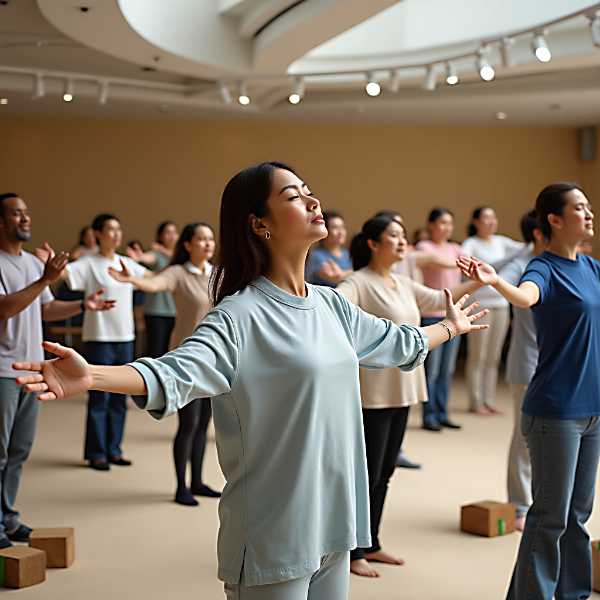What Is Qigong?
A Gentle Practice for Energy and Health
Qigong (气功) is one of the most accessible and deeply rooted practices in Chinese health culture. It combines gentle movement, breathing, and attention to cultivate Qi—the body’s vital life energy—and bring it into smooth, steady flow. For those new to Chinese health practices, Qigong offers a soft but powerful introduction.
At its heart, Qigong is about balance. It calms the mind, strengthens the body, and supports the internal systems that keep us well. Unlike intense exercise routines, Qigong can be practiced by people of all ages and physical conditions—even standing, sitting, or lying down. Movements are slow and deliberate, designed to harmonize breath, posture, and mental focus.
In traditional Chinese medicine, Qi needs to move freely through the body to nourish the organs, clear tension, and support emotional stability. When Qi is blocked or depleted, discomfort and illness may arise. Qigong practices were developed over centuries to support digestion, immunity, sleep, and emotional calm—all by guiding the flow of this energy.
There are many styles of Qigong, ranging from martial to medical to spiritual. Some forms involve standing still and holding a posture, while others include flowing movements or coordinated sequences. While the goals may vary slightly, the principle is the same: regulate the breath, align the body, and cultivate awareness.
The best way to begin is with a teacher who understands your needs. Look for someone who emphasizes safety, breath, and relaxation—especially if you are dealing with health concerns. Many community centers, senior programs, or Chinese cultural associations offer beginner Qigong classes. Even a short daily practice—10 to 15 minutes—can make a noticeable difference in mood, flexibility, and energy.
You don’t need special clothing or equipment. Just a quiet space, soft focus, and willingness to move with intention.
Qigong is not about performance or results. It’s about tuning in, softening tension, and allowing the body to do what it naturally wants to do: restore itself. Over time, Qigong becomes more than a practice—it becomes a way to return to yourself, gently and with care.
Vocabulary Guide
- Qigong (气功) – Pronounced “chee-gong,” this is a system of coordinated movement, breath, and focus used to regulate qi and support physical and emotional health.
- Qi (气) – The body’s life energy. In qigong, movement and breath are used to encourage smooth, balanced flow of qi through internal channels.
- Longevity (养生 yǎngshēng) – While yangsheng is often translated as “nourishing life,” it is also tied to the idea of long-term health and graceful aging—an important goal of qigong.
- Standing meditation (站桩 zhànzhuāng) – A form of qigong where the practitioner stands still in a posture, focusing on breath and alignment to cultivate internal energy.
- Meridians (经络 jīngluò) – Channels through which qi flows in the body, connecting organs and acupoints. Qigong helps clear and regulate these pathways.







